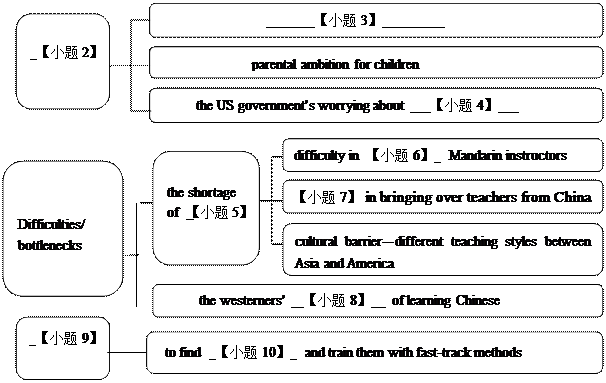As the US wakes up to China’s rising status (地位) as an economic and strategic competitor, US parents are urging their children to learn Chinese, reports Julian Borger.
The US is being swept by a rush to learn Mandarin (普通话) -- from wealthy New York mothers hiring Chinese nannies (保姆) for their small children to a defence department education project in Oregon.
The forces driving Mandarin’s momentum (势头) are parental ambition for children facing a future in which China is almost certain to be a major player, and the government is worried about that America may get left behind in that new world.
The bottleneck is the supply of teachers. Mandarin instructors are difficult to import and difficult to train. There are visa problems in bringing over teachers from China but the biggest barrier is cultural. Teaching in Asia is generally done by rote and the change to western, interactive styles of instruction can be a large leap(跳越).
On the other hand, it requires enormous firmness for westerners to learn a language like Chinese, with its thousands of written characters. According to the Asia Society in New York, all of America’s teacher-training institutions turn out only a couple of dozen homegrown Mandarin teachers.
One way to ease the shortage is to find native Mandarin speakers and use fast-track methods to train them. However, the majority of Chinese-Americans grew up speaking Cantonese, the dialect(方言)spoken in Hong Kong, where their parents came from. Many are themselves signing on as Mandarin students at the private language schools springing up on the west coast.
Title : 小题1: in the USA

小题1:A Chinese-learning Rush / A Mandarin-learning Rush
小题2:Reasons/ Causes
小题3:China’s rising status
小题4:getting /being left behind
小题5:Chinese / Mandarin teachers
小题6:importing and training
小题7:visa problems
小题8:shortage/lack of firmness
小题9:Solutions
小题10:native Mandarin speakers
